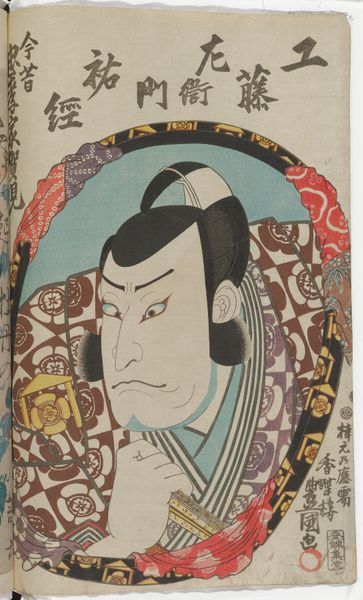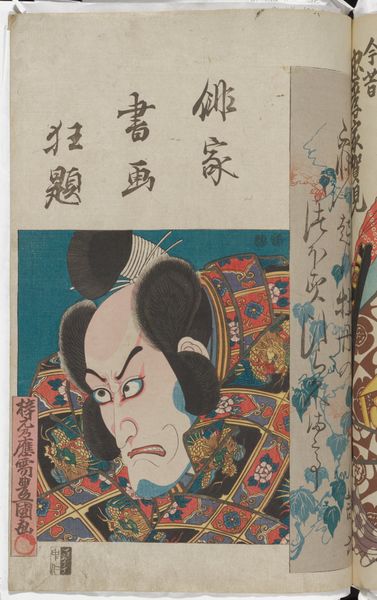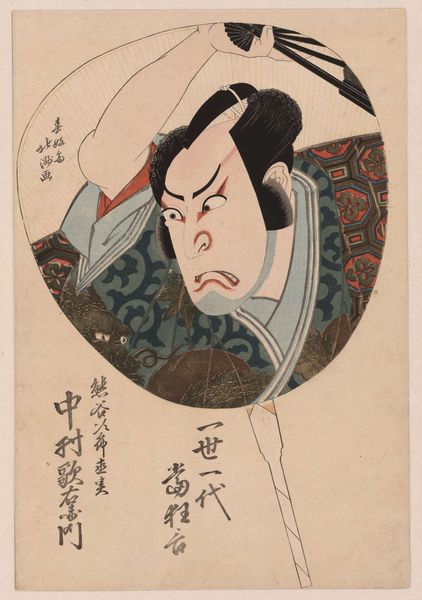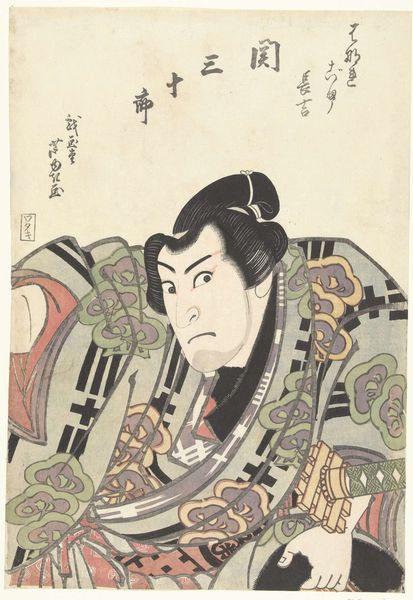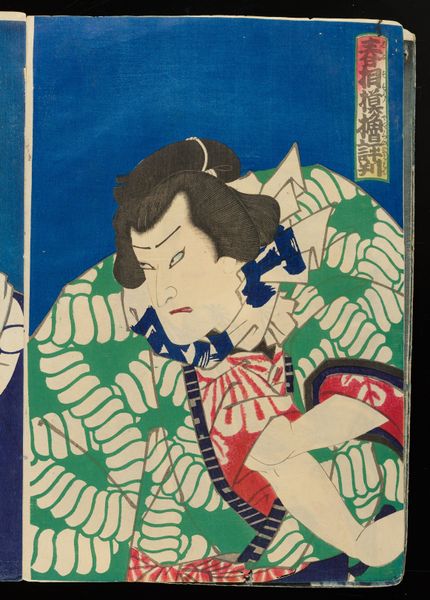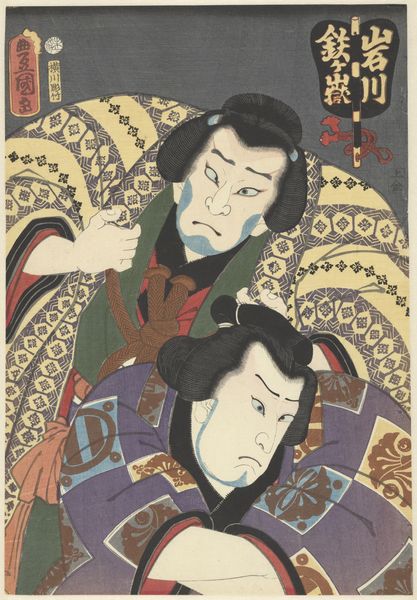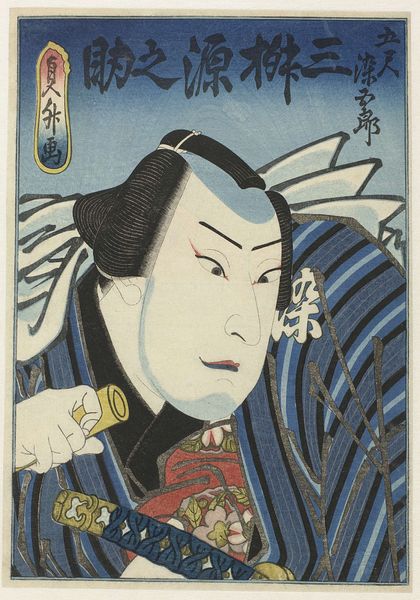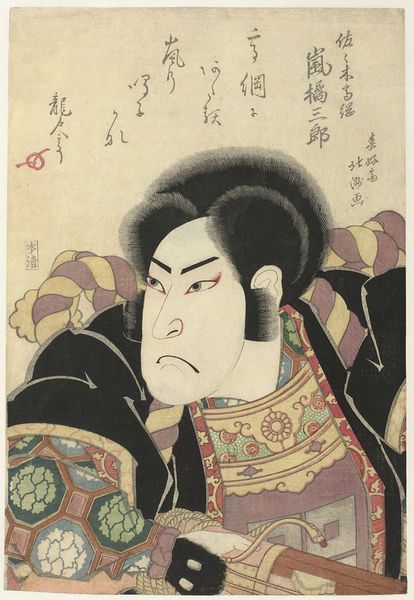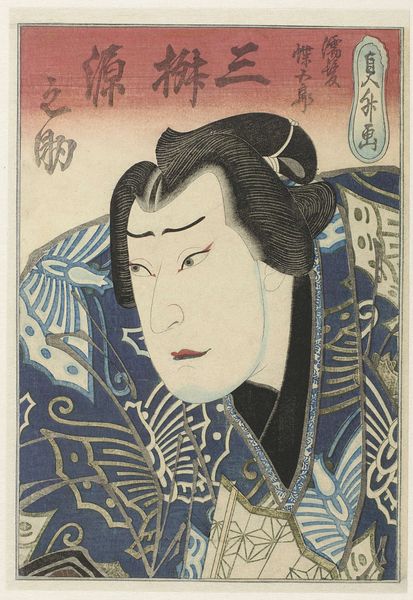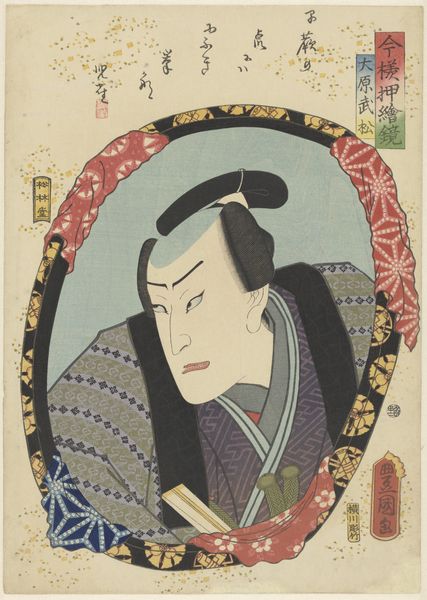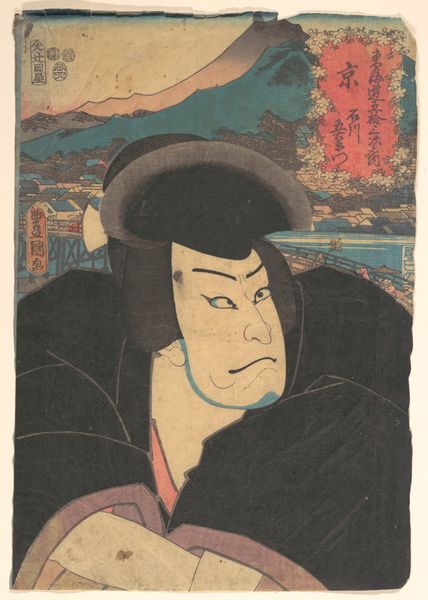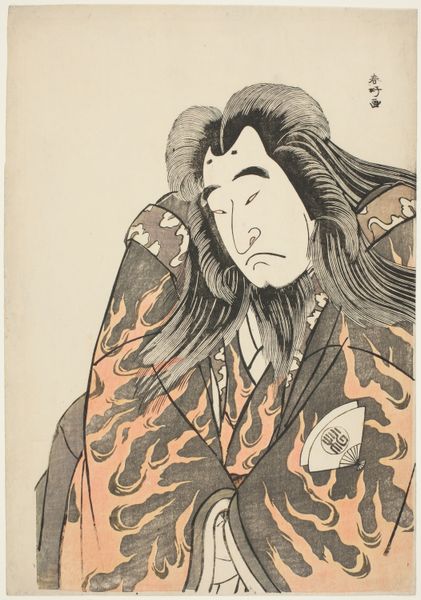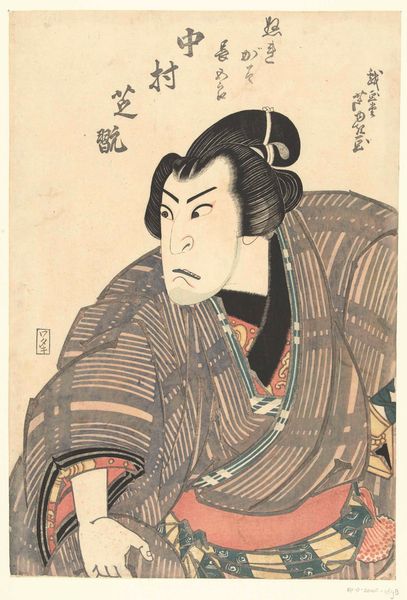
print, ink, woodblock-print
#
portrait
#
water colours
# print
#
asian-art
#
landscape
#
ukiyo-e
#
japan
#
figuration
#
ink
#
woodblock-print
#
watercolor
Dimensions: 14 3/8 × 9 5/8 in. (36.5 × 24.5 cm) (image, sheet, vertical ōban)
Copyright: Public Domain
Editor: This is "Actor Nakamura Utaemon IV as Hyūga Kōto" by Utagawa Kunisada, made in 1848. It's a woodblock print. The actor’s face is so intense; it really conveys a lot of emotion. What do you see in this piece, from a historical perspective? Curator: Beyond the striking visual of Nakamura Utaemon IV, let's consider this print within the socio-political landscape of 19th-century Japan. Ukiyo-e prints weren't merely decorative; they often served as cultural commentary and a reflection of the values and tensions of the time. Notice the performative aspect of his gaze – can we interpret it as a commentary on the rigid social structures, where individuals were constantly playing roles dictated by societal expectations? Editor: That’s fascinating. I hadn’t thought about it in terms of social structures. Do you think the character he’s portraying also adds another layer? Curator: Absolutely. Kabuki theater, a popular art form during that period, frequently challenged established norms through symbolic narratives and character portrayals. This image captures a specific role. Think about how the figure defies those constraints and perhaps reveals the possibility of social critique embedded in popular entertainment. Consider his expression: is it defiance? Discomfort? Is he colluding with or challenging the viewer? Editor: I see what you mean. Looking at it that way, it adds depth to what seems at first just like a portrait. It’s like the print is whispering a challenge to the status quo. Curator: Precisely. And that quiet subversion is precisely what makes Ukiyo-e such a potent source of insight into the lives and ideologies of its time. These actors became symbols, their images deployed to test the boundaries of acceptability. Editor: Wow, I definitely see this print in a whole new light now. Thanks for showing me that art isn't just what you see, but also what it means in its time. Curator: My pleasure. It's about understanding art as a living participant in ongoing social and political dialogues.
Comments
No comments
Be the first to comment and join the conversation on the ultimate creative platform.
